How to Fertilize Onions: A Comprehensive Guide for Maximum Yield
- May 6, 2024
- 1 comment
Learn how to fertilize onions with our guide to maximizing yield. Get expert tips for optimal growth and bountiful harvests. Growing onions can be incredibly rewarding, especially when you achieve a bountiful harvest. This comprehensive guide is designed to help both beginners and experienced gardeners master the nuances of onion fertilization.
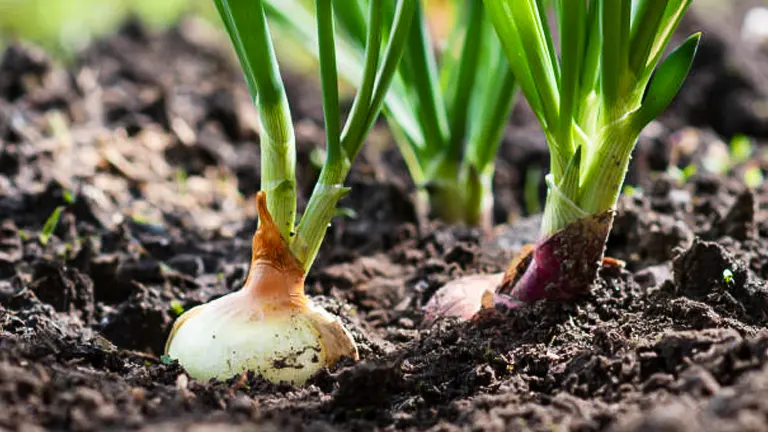
From choosing the right fertilizer to determining the optimal timing and method of application, we’ll cover everything you need to ensure your onions grow healthy and prolific. Dive into these essential tips and techniques to maximize your garden’s potential.
Table of Contents
- Understanding Onion Nutritional Needs
- Preparing the Soil for Planting and Fertilization
- Choosing the Right Fertilizer
- Planting Configurations for Optimal Growth
- Effective Fertilization Techniques
- Pruning and Thinning Techniques
- Managing Common Fertilization and Planting Challenges
- Monitoring Plant Health and Making Adjustments
- Conclusion
- FAQs
Understanding Onion Nutritional Needs
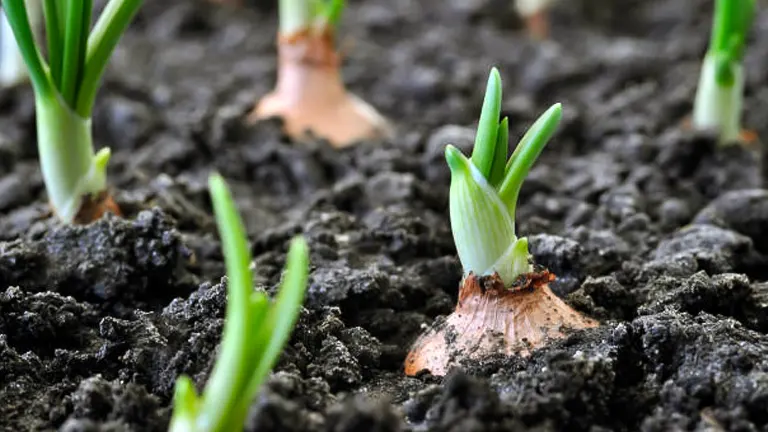
Onions, like all plants, need a balanced diet of nutrients to grow, but they have specific needs that differ somewhat from other garden vegetables. Here are the crucial nutrients your onions need:
- Nitrogen (N): Vital for early plant growth, nitrogen helps form lush, healthy leaves. Early in the growing season, ample nitrogen is essential to develop the canopy that will support bulb formation.
- Phosphorus (P): This nutrient is crucial for healthy root development and helps onions store and transfer energy within the plant, supporting the growth of strong bulbs.
- Potassium (K): Potassium is critical for overall plant health. It helps regulate photosynthesis and resists diseases, which is vital for the robust growth of bulbs.
- Sulfur (S): Particularly important for onions, sulfur contributes to the flavor and storing capacity of the bulbs.
Secondary nutrients such as calcium and magnesium, along with trace elements like boron and manganese, also play a role, though in smaller quantities. These nutrients help in building plant cells and aiding in photosynthesis and overall growth processes.
Recognizing a deficiency in these nutrients is key to correcting it before it impacts yield. For instance:
- Nitrogen deficiency usually appears as stunted growth and yellowing leaves.
- Phosphorus deficiency can cause dark, dull, or purplish leaves.
- Potassium deficiency often shows as leaf edge yellowing and scorching.
Regular soil tests can help identify which nutrients are lacking, allowing you to tailor your fertilization practices to the specific needs of your onion crop.
Preparing the Soil for Planting and Fertilization

Before planting your onions, precise soil preparation is crucial to support optimal growth. The initial step in this process involves conducting a comprehensive soil test. This assessment not only reveals the pH level but also provides a detailed nutrient profile, crucial for tailored soil amendment.
Soil pH and Amendment Recommendations:
Onions thrive in a slightly acidic to neutral soil pH, optimally between 6.0 and 6.8. Adjusting the soil pH to this range ensures maximum nutrient availability and uptake:
- For acidic soils (pH < 6.0): Add garden lime to increase the pH. Application rates depend on the current pH and soil type but generally range from 5 to 10 pounds per 100 square feet.
- For alkaline soils (pH > 6.8): Apply elemental sulfur to decrease the pH, typically at rates of 1 to 3 pounds per 100 square feet.
Enhancing Soil Structure and Nutrient Retention:
Incorporate organic matter such as compost or well-rotted manure to improve soil structure, which enhances nutrient availability and boosts moisture retention. Target a soil composition that is rich and loamy, aiming for:
- Organic content: Approximately 5% to 10% by volume.
- Texture: Balanced mix of sand, silt, and clay.
Proper tilling after amendment is essential to ensure a loose, aerated soil structure that facilitates better root growth and nutrient absorption.
Choosing the Right Fertilizer

Selecting the right fertilizer is vital for the health and productivity of your onions. Whether organic or synthetic, your choice should be informed by the specific needs identified in your soil test.
Fertilizer Types and Their Benefits:
| Fertilizer Type | Nutrient Release | Best Use |
|---|---|---|
| Organic Fertilizers | Slow, inconsistent | Enhancing soil health long-term |
| Synthetic Fertilizers | Fast, controlled | Quick correction of deficiencies |
- Organic Fertilizers: Examples include blood meal (rich in nitrogen), bone meal (high in phosphorus), and kelp meal (a good source of potassium). These options improve soil structure and microbial activity over time.
- Synthetic Fertilizers: These are precise in delivering nutrients. A balanced N-P-K (Nitrogen-Phosphorus-Potassium) ratio for onions typically skews slightly higher in nitrogen to promote vigorous early growth.
Fertilizer Application Tips:
- N-P-K Ratio: For onion growth, a ratio of approximately 10-10-10 is typically effective, adjusting based on soil test results.
- Application Rate: Follow label directions, generally around 1 pound of N-P-K fertilizer per 100 square feet, applied in split applications.
Planting Configurations for Optimal Growth
Proper planting configuration is essential for maximizing yield in medium to high-density onion plantings.
Spacing Guidelines for Optimal Nutrient Absorption
| Planting Density | Row Spacing | Plant Spacing |
|---|---|---|
| Medium Density | 12-18 inches | 4 inches |
| High Density | 12-18 inches | 2-3 inches |
- Row and Plant Spacing: Ensuring proper spacing helps in reducing competition for nutrients and light, critical factors affecting bulb size and yield.
- Planting Patterns: Staggered rows are recommended to maximize space utilization and improve airflow, significantly reducing the risk of fungal diseases.
By adhering to these scientifically-backed practices, you can optimize the conditions for growing healthy, productive onions. Each of these steps plays a pivotal role in setting up your onion crop for success from the ground up.
Effective Fertilization Techniques for Onions

To maximize the yield and health of onion crops, the timing and method of fertilizer application must be carefully managed throughout the plant’s growth stages. Onions progress through several distinct phases, each with its own nutritional demands that, if met, can significantly enhance growth and yield.
Understanding Fertilization Requirements Across Growth Stages
- Early Growth (Seedling Stage): During this initial phase, onion seedlings require a robust foundation for leaf development, which is crucial for subsequent bulb formation. Applying a nitrogen-rich fertilizer (such as a 10-5-5 N-P-K ratio) at about 0.5 pounds per 100 square feet encourages vigorous leaf growth. This stage sets the stage for a healthy plant base capable of supporting larger bulbs later.
- Bulb Development (Mid-Growth Stage): As the plants transition to bulb formation, the nutritional focus shifts towards phosphorus and potassium, which are essential for bulb expansion and overall health. A balanced fertilizer, typically a 10-10-10 mix, should be applied at a rate of 1 pound per 100 square feet to support this critical stage of growth. The right amount of phosphorus stimulates root development and bulb growth, while potassium plays a key role in cellular function and overall plant vigor.
- Pre-Harvest (Final Stage): Approaching harvest, it’s important to taper off nitrogen to avoid promoting further leaf growth at the expense of the bulbs. Instead, a phosphorus-rich formulation (such as 5-10-10) can be beneficial, especially if soil tests indicate a phosphorus deficiency. This adjustment ensures that the plant’s energy is directed towards maturing the bulbs, enhancing their size and quality.
Fertilizer Application Techniques
Achieving optimal nutrient distribution without harming the plant requires specific application methods:
- Broadcasting: Before planting, spread fertilizer evenly across the soil surface and then incorporate it into the top 4 to 6 inches of soil. This method is ideal for preparing the bed and ensuring that the nutrients are accessible to the young roots.
- Side-Dressing: This targeted approach involves applying fertilizer in shallow furrows or trenches that run parallel to the onion rows, about 2 inches away from the plant stems. This placement helps prevent direct contact with the plant, which could cause burn, while placing nutrients where they can be readily absorbed by the roots.
- Foliar Feeding: Sometimes, plants need a quick boost of nutrients, especially if they show signs of deficiencies during critical growth phases. Applying a diluted liquid fertilizer directly to the onion leaves can be effective. However, this method should be used sparingly and only when necessary, as overuse can lead to leaf burn and other stress-related issues.
Pruning and Thinning Techniques
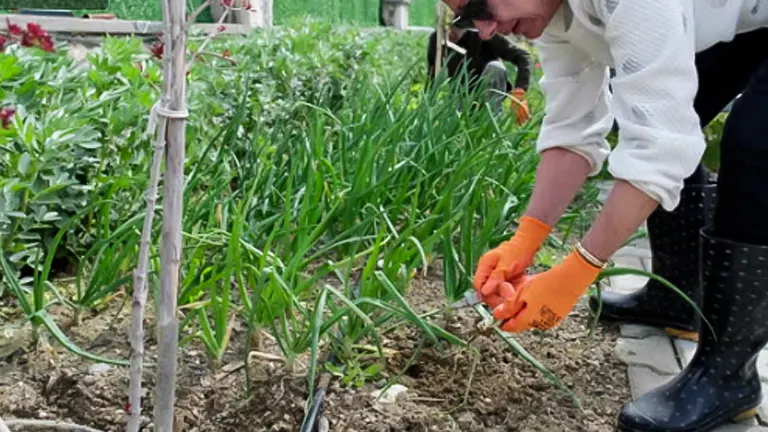
Proper thinning and pruning are crucial for optimizing onion growth and productivity by ensuring plants have enough space and resources to develop without competition. These techniques not only improve crop yields but also enhance the health and size of the onions.
Thinning Strategies
Thinning is essential for managing plant density and ensuring optimal growth conditions. It prevents overcrowding, which can lead to competition for light, water, and nutrients, adversely affecting the size and quality of the bulbs.
- Seedling Thinning: After germination, seedlings should be thinned to 2 inches apart. This allows each plant enough room to establish a healthy root system. Ensure that the strongest, most vigorous seedlings are left to grow to maturity.
- Intermediate Thinning: As the plants grow to 2 to 4 inches tall, further thinning is necessary to accommodate expanding root systems and increasing nutrient demands. For medium-density farming, thin plants to about 4 inches apart. For high-density setups, maintain a distance of 2 to 3 inches.
Pruning Practices
Pruning helps direct the plant’s energy into producing larger bulbs rather than maintaining non-essential foliage.
- Scape Removal: Onions that form scapes should have these flower stalks removed as soon as they appear. Scapes divert the plant’s resources away from bulb development, potentially affecting both the size and quality of the harvest.
- Leaf Pruning: Remove damaged or diseased leaves promptly. This not only prevents the spread of disease but also improves air circulation around the plants, reducing the risk of further fungal or bacterial infections.
Detailed Guide
To provide clarity on the impact of these techniques, here is a table illustrating the effects of thinning and pruning on onion growth based on scientific data:
| Technique | Plant Spacing (inches) | Expected Bulb Diameter Increase (%) | Health Impact |
|---|---|---|---|
| Seedling Thinning | 2 | +10% | Enhances root development |
| Intermediate Thinning | 4 (medium-density) | +15% | Reduces nutrient competition |
| 2-3 (high-density) | +20% | Maximizes space use efficiency | |
| Scape Removal | Applies to all spacing types | +25% | Focuses energy on bulb formation |
| Leaf Pruning | Applies after any thinning | Variable based on disease prevention | Improves plant health and reduces disease risk |
Managing Common Fertilization and Planting Challenges

Addressing and overcoming the typical challenges in onion cultivation is essential for ensuring healthy growth and maximizing yields. Below, I delve into several common issues, including nutrient burn, uneven growth, and pest management, providing targeted solutions and a detailed scientific breakdown of each.
Nutrient Burn and Over-Fertilization
Nutrient burn, caused by excessive fertilizer application, can lead to significant plant stress.
- Symptoms: Include the yellowing and browning of leaf edges, and in severe cases, wilting of leaves.
- Solutions: To correct this, you can flush the soil with water to help leach out excess nutrients, particularly salts. Alternatively, incorporating organic matter such as compost can help stabilize nutrient levels by improving soil structure and enhancing microbial activity, which naturally balances nutrient availability.
Uneven Growth and Nutrient Deficiencies
Uneven growth often results from imbalanced nutrient supply or environmental conditions.
- Symptoms: Manifest as stunted growth, leaf discoloration (chlorosis), and malformed bulbs.
- Solutions: Conduct regular soil tests to monitor nutrient levels. Based on the results, apply specific fertilizers to correct the deficiencies. For instance, a lack of nitrogen might require a supplemental application of a nitrogen-rich fertilizer.
Pest and Disease Management
Effective pest and disease management is crucial for maintaining the health of onion crops.
- Preventive Measures: Implement crop rotation to disrupt pest life cycles, use drip irrigation instead of overhead watering to minimize leaf moisture, and remove plant debris to reduce habitat for pests and pathogens.
- Natural Remedies: Apply neem oil, which acts as a natural insecticide, and introduce beneficial insects like ladybugs or lacewings to control aphid populations.
Monitoring Plant Health and Making Adjustments
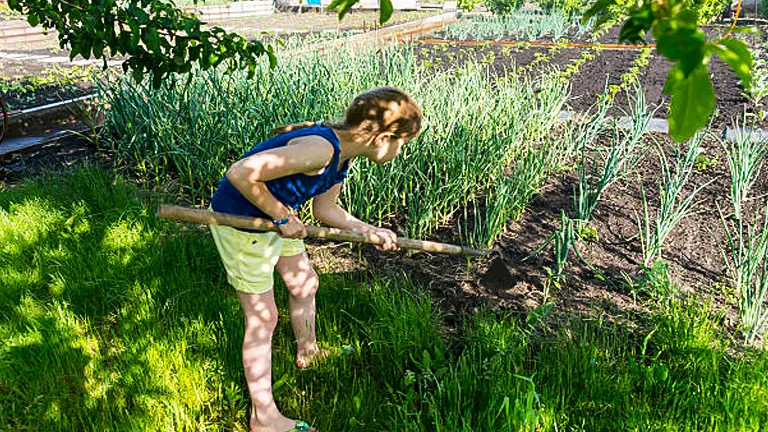
Maintaining vigilance over your onion crop throughout the growing season is crucial for identifying issues early and adjusting cultivation practices as necessary. Effective monitoring involves both visual inspections and periodic soil testing.
Visual Inspection:
- Leaf Health: Regularly check for signs of nutrient deficiencies or excesses. Yellowing leaves may indicate a lack of nitrogen, while burnt tips could suggest over-fertilization.
- Bulb Development: Examine the size and shape of the bulbs. Irregular or stunted bulb growth often points to inadequate spacing or insufficient nutrients.
- Signs of Pests or Disease: Look for unusual spots on leaves, distorted growth, or insect activity. Early detection is key to managing these issues before they escalate.
Soil and Tissue Testing:
- Soil Tests: Conduct soil tests mid-season to ensure nutrients are still adequately available and pH levels remain optimal. Adjust fertilization based on results.
- Tissue Tests: Leaf tissue analysis can provide detailed nutrient data, helping fine-tune your fertilization regimen to meet specific plant needs.
Related Post
- How to Fertilize Bougainvillea: A Complete Guide for Stunning Blooms
- How to Fertilize Apple Trees: Essential Tips for a Bountiful Harvest
- How to Fertilize Lemon Trees: Secrets for Thriving Citrus
- How to Fertilize Avocado Tree: A Step-by-Step Guide for Lush Growth
Conclusion
Successfully cultivating onions requires a thoughtful integration of various agricultural practices, from soil preparation and fertilization to proper spacing and vigilant monitoring. By meticulously applying the right techniques and responding adaptively to the changing needs of the plants, gardeners can significantly enhance their onion yields. This guide provides the foundational knowledge needed to approach onion farming with confidence, offering a pathway to not only increased productivity but also the rewarding experience of nurturing crops from seed to harvest. With commitment and careful management, achieving a fruitful and healthy onion garden is well within reach.
FAQs
- What initial steps should I take before applying fertilizer to onion plants?
Begin with a detailed soil test to assess nutrient levels and pH. This will inform you about the specific fertilization needs of your soil, allowing you to tailor your approach effectively. - How can I tell if my onions are getting too much fertilizer?
Over-fertilization is indicated by overly lush, green growth with few or small bulbs, or leaves that begin to yellow or brown at the edges. This condition can impair overall bulb development. - What’s the impact of nitrogen on onion growth, and how do I manage its levels?
Nitrogen is crucial for leaf development in onions, which in turn supports bulb growth. Apply a nitrogen-rich fertilizer early in the season, but reduce or eliminate nitrogen as onions begin to form bulbs to avoid excessive leaf growth at the expense of the bulbs. - Are there specific micronutrients that onions require?
Yes, besides the primary nutrients, onions benefit from micronutrients such as boron, manganese, and zinc. These elements support various biological functions, including cell wall synthesis and enzyme activation. - How should I apply fertilizer to avoid damaging the onion plants?
Fertilizer should be applied around the base of the onions, avoiding direct contact with the plants to prevent chemical burn. Using a side-dressing technique or diluting liquid fertilizers can minimize the risk of damage. - Does the type of onion affect fertilization strategy?
Different onion varieties, such as short-day versus long-day onions, may require slight adjustments in fertilization timing and quantity, reflecting their growth patterns and seasonal adaptations. - What role does potassium play in onion cultivation, and how should I ensure adequate levels?
Potassium is vital for overall plant health and disease resistance. It helps in the formation of strong cell walls, thus enhancing the onion’s ability to store well. Ensure potassium levels are adequate, especially during mid to late growth stages, to support robust bulb formation. - Can mulching impact the fertilization of onion plants?
Mulching helps maintain soil moisture and temperature, which can enhance the effectiveness of fertilizers by reducing evaporation and runoff. Organic mulches like straw or leaf litter can also gradually contribute nutrients as they decompose.
With these expert insights and practical tips at your disposal, you’re now well-equipped to enhance your onion cultivation practices for maximum yield. Happy gardening, and here’s to your success in growing bountiful, healthy onions!

Benjamin Brooks
Forestry AuthorGreetings! I'm Benjamin Brooks, and my journey over the past 15 years has revolved around the fascinating realms of content creation, expertise in snow clearing, and the intricate world of lumberjacking and landscaping. What began as a simple curiosity about the natural world and heavy machinery has evolved into a passionate profession where my love for crafting words intertwines seamlessly with my lumberjacking and garden skills.



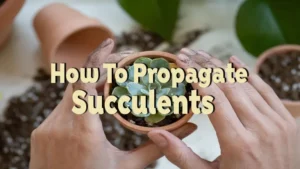

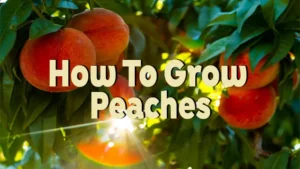



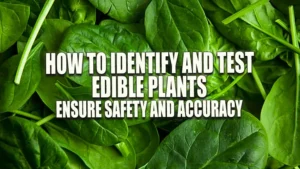
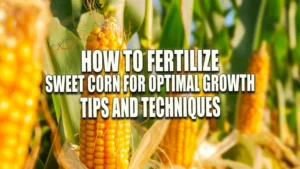

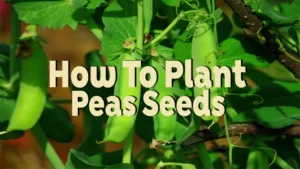
Soil fertility can be main- tain throught organic matter maintenance to improve soil structure.
Noel Salvanera
May 7, 2024 7:43 am